21+ Sample Video Production Plan
-
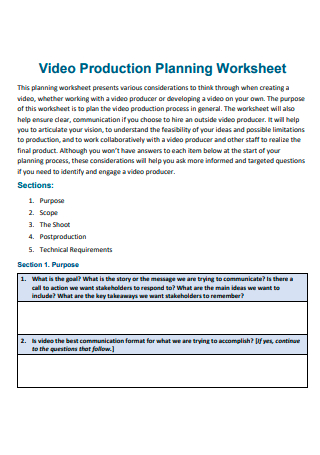
Video Production Planning Worksheet
download now -
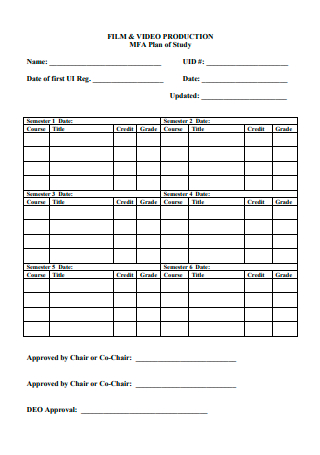
Film and Video Production Plan
download now -
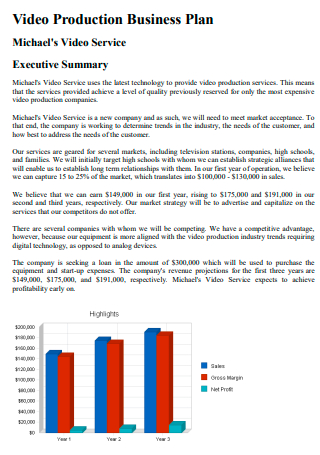
Video Production Business Plan
download now -
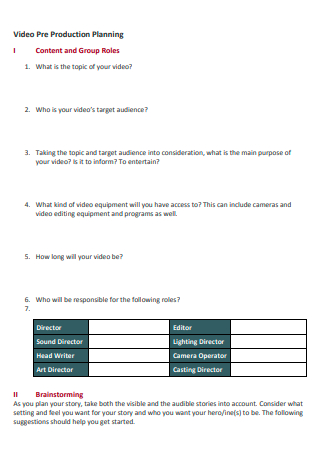
Video Pre Production Planning
download now -
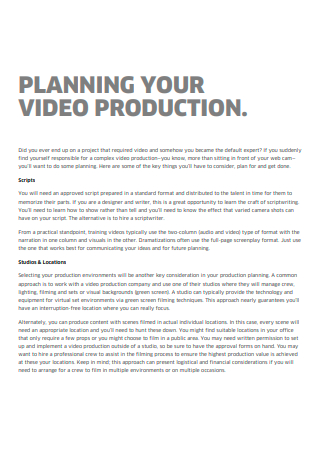
Video Production Planning Example
download now -
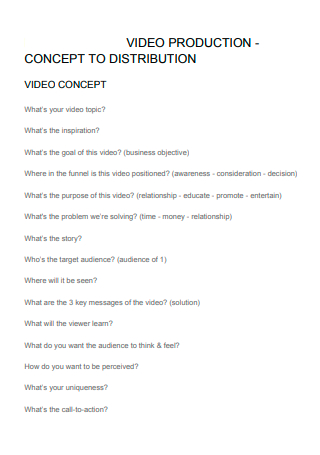
Video Production Concept to Distribution Plan
download now -
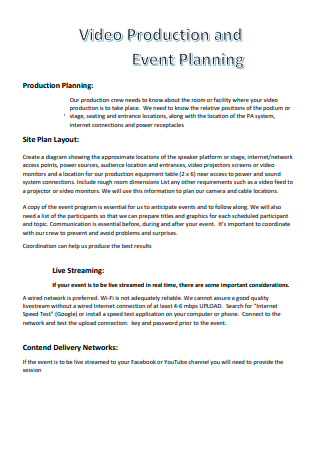
Video Production and Event Planning
download now -
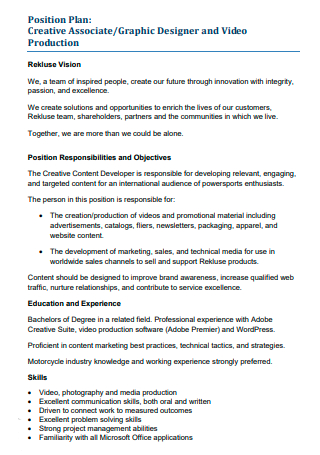
Video Production Position Plan
download now -
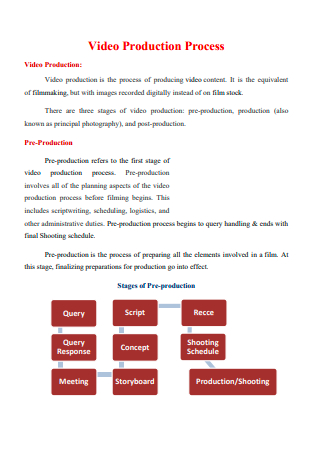
Video Production Process Plan
download now -
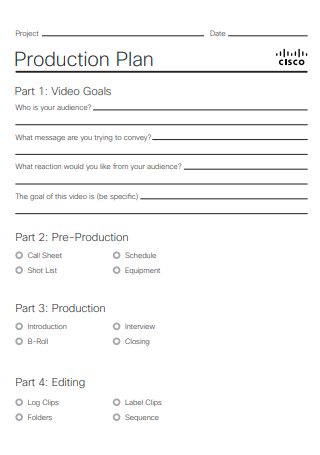
Video Production Plan Example
download now -
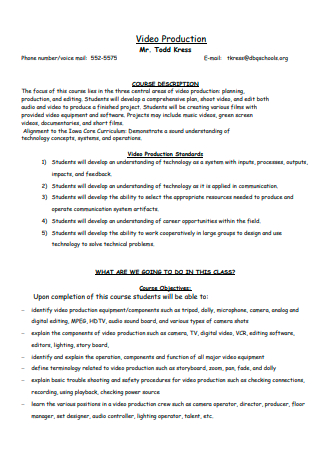
Standard Video Production Plan
download now -
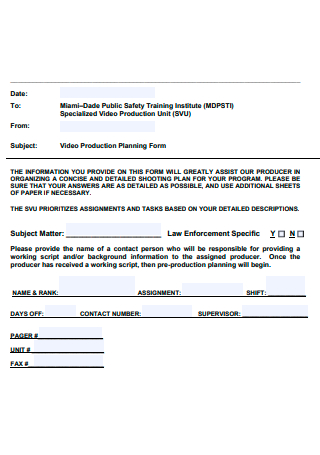
Video Production Planning Form
download now -

Printable Video Production Planning
download now -
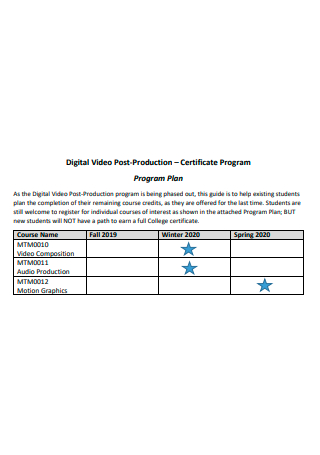
Digital Video Post Production Program Plan
download now -
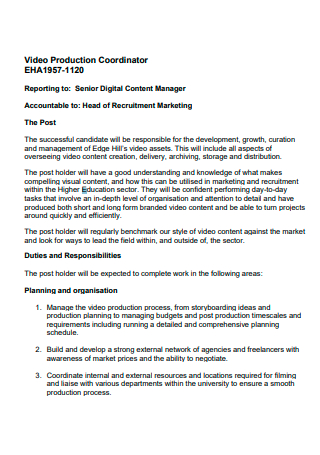
Video Production Coordinator Planning
download now -
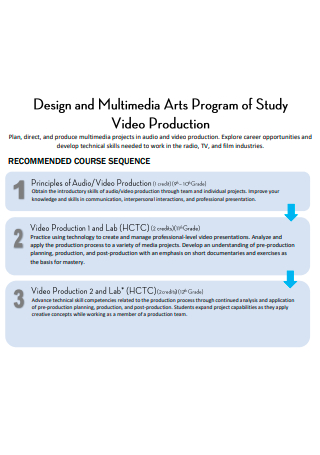
Formal Video Production Plan
download now -
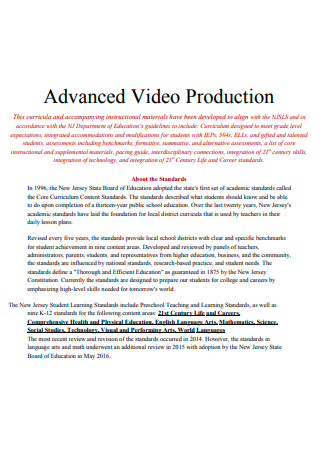
Advanced Video Production Plan
download now -
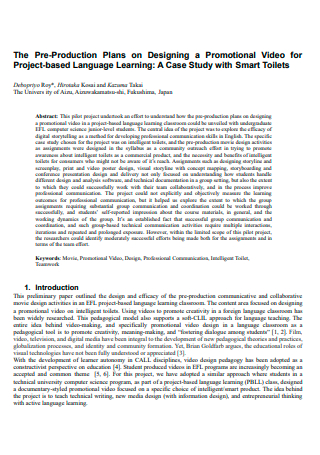
Promotional Video Pre-Production Plan
download now -

Video For Web Pre-Production Planning
download now -
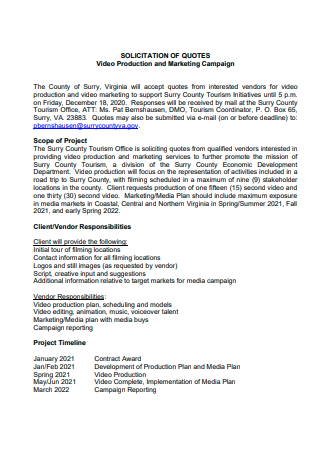
Video Production and Marketing Campaign Plan
download now -
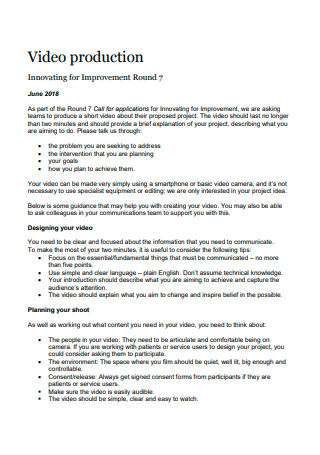
Draft Video Production Planning
download now -

Advanced Digital Video Production Plan
download now
FREE Video Production Plan s to Download
21+ Sample Video Production Plan
What Is a Video Production Plan?
Video Production and Its Different Types
How to Create a Video Production Plan
FAQs
What are the important considerations when planning a video production?
What are the other necessities that are included in the planning process?
What is a storyboard?
What are the other ways of promoting a video?
What is meant by production scale?
What Is a Video Production Plan?
A video production plan is a documented planning process on producing, making, or creating video content. Sometimes called filmmaking, or film production, the video production plan consists of several stages in creating video content that is intended either for TV, cinema, home video, or internet platforms. Not to be confused with the video content, video content is the type of format in which the video is being featured, such as vlogs, webinars, live videos, or even a recorded presentation, while a video production is an actual process of making the video itself. The stages of creating a video are pre-production, production, and post-production. The end goal of any video production is to be able to engage the audience with the use of creative visual and audio elements. Its measure of success is when a viewer was able to finish the whole film and has developed their viewpoints on the film’s storytelling.
Video Production and Its Different Types
A video production is probably the most popular and engaging form of entertainment. The boom of social media platforms and digital apps further accelerated the use of video production as a way of reaching out to a broad audience, where the message is ingeniously interpreted through various creative visual displays and performances. What better way to connect to your audiences than to do a “show, don’t tell,” type of presentation. Aside from the popular social networking video apps such as TikTok, Clash, Dubsmash, Instagram, and even Facebook live, there are other types of video production out there that are also utilized, depending on the message being conveyed, and the preference of the target audience.
How to Create a Video Production Plan
Despite the ease of use benefit that most media platforms offer when it comes to creating videos, all go through the same process of video production planning. Come to think of it, even a 30 seconds video of TikTok dancing has to go through some planning at one point! Planning ensures the quality of any kind of output, most particularly in this case, a video content’s output. Even the likes of genius filmmakers such as Steven Spielberg and Martin Scorsese go through hours, days, weeks, months, and sometimes even years of planning just to get that film outputs that everyone around the world knows and loves. So, what if you’re not in the movie industry, and you’re tasked to create a commercial video for your company’s product launch? What are the steps that you need to know about creating a video production plan?
-
Step 1: Identify the Purpose of the Video
Determining the intent behind video production is important when you’re drafting the content of your video. Knowing who your audience is, what the product or service is being presented, who or what is being promoted, what kind of message needs to come across, are all the questions that need to be answered. Kind of like a mission statement, but stated in brief and concise sentences, the purpose of the video production needs to identify what are the values and cultures that should be represented and presented at the same time. Likewise, if it’s for a marketing campaign, the intent should also reflect the company’s core values behind the video presentation of the product. Having a SMART Goal, or an intent that’s Specific, Measurable, Achievable, Relevant, and Time-bound could also help you in identifying the purpose for the video production.
-
Step 2: Pre-Production Stage
The pre-production stage is where minds work together, or even sometimes where the butting of heads takes place, during the overall conception of the video. Pre-production involves the story and concept creation, scriptwriting, video format determining, storyboard creation, actor casting, location scouting, resources planning (such as props, costumes, et cetera), choreographing, shoot schedules, and so on. Perhaps the longest part of a video production process, but the most important part. The pre-production stage serves as the roadmap for the whole crew or production involved in the video creation. Pre-production provides that opportunity to organize everything before the actual shooting starts, from the video concept, staging, manpower, and talents, and right down to the budget of the whole video production. Having a constructive and effective pre-production stage is important, especially when it comes to managing the budget. Of course, the whole video production revolves around the budget on which it is set up, so the pre-production stage should work around making sure the whole video creation process fits the given funding.
-
Step 3: Production Stage
When you have your pre-production ironed out, next comes the actual stage of creating the video, the production stage. As cliché as it sounds, this is where the magic starts to happen. The shooting is based upon the storyboard that was made. Actors, dialogues, and scripts are put into use. Background and cinematography come to life. Cameras started rolling. Schedules are implemented and, supposedly, followed. The lighting, artwork, special effects, sound, location, everything starts happening according to the plan. The production stage is fairly a standard procedure to be followed. There are a lot of factors that could affect the production and could take everyone off the schedule, such as a sudden change in weather conditions, unavailability or lack of resources, or even, yes, the personality clash between actors, directors, and staff. To keep everyone focused and on track, always bear in mind that the whole video production is revolving on a budget, that’s why it is important that during production, everyone should be working and playing their role as planned.
-
Step 4: Post-Production Stage
The post-production stage is all about the assembling, editing, reviewing, revising, and approval of the video production. Assembling is putting together all the shots that were captured. Editing involves adding or changing scenes, sounds, special effects, sound effects, graphics, and so on. Reviewing and revision are done when some scenes don’t meet the satisfaction and need to be redone. Approval means that the video production has to be approved by the stakeholders involved in the production of the video before it can even be released and distributed. The post-production stage should ensure that the original intent that was identified for creating the video should be reflected in the output.
-
Step 5: Release and Distribution
Once you have a final video output, now is the time to post it on the channels that were predetermined during the pre-production stage. For advertising campaigns, a popular choice for posting is through social media channels. Other channels could be through TV broadcasts or websites. The distribution channel identified should be based on the number one choice of viewing of the targeted customer population.
FAQs
What are the important considerations when planning a video production?
First of all, find out what is the intent and purpose behind creating the video. Next, determine who are your target audience or viewers, and any other insights you have on them such as their demographics. Demographics are classifications based on age, gender, sex, lifestyle, income, et cetera. Aside from that, you need to determine what kind of message the video needs to convey, what it hopes to achieve, such as what the viewers will feel, think, or act. Last but not least, always consider that most of the video productions are working around a budget and running against a deadline for release and distribution.
What are the other necessities that are included in the planning process?
Planning usually includes: hiring directors, actors, crews, equipment operators, technicians, production assistants, maintenance team, creative team; scouting for shoot locations; organizing equipment, tools, makeups, costumes, props; securing necessary licenses and permits; scheduling of video filming, and many more.
What is a storyboard?
A storyboard is a pre-production process that organizes and lays out the scene accordingly in a narrative way. It breaks down the storytelling process into bits and pieces and flows, or what is known as scenes, making an overall representation of what the estimated output should look like. Before the actual shooting of the video, a storyboard is presented to the whole production team, including the producers, to present the story or the concept’s presentation flow. Storyboards are an offshoot of scriptwriting but are represented in drawings, sketches, or caricatures. Sometimes, even before scripts are written, storyboards are the first ones to be presented for a video idea or a film, movie concept, and once it’s got a nod and go signal, then the scriptwriting comes afterward.
What are the other ways of promoting a video?
Aside from posting on social media sites, other ways of promoting a video include: optimizing the video search through the SEO process; getting the support of key media influencers to help promote and spread the video; paying for airtime for the video’s advertisement to be shown in TVs or cinemas; including the video ad in email and other marketing campaigns; and getting the services of celebrities or artists to be the video’s, or the product brand’s, ambassador.
What is meant by production scale?
A production scale refers to the size of the crew or the number of people involved in the video production process. Some production scales can be as small as a three-man crew, with only the actor, director/scriptwriter, and the cameraman involved. Some would require a bigger crew, such as a full-blown production scale for the making of a motion picture. Overall, a production scale depends on the type of video that is to be produced.
Marcia was given the important task of creating a commercial video for a product that will be launched by her company. To do this, she needs to come up with a video concept that could best represent the product and its benefits. She gathers her marketing team, comes up with a storyboard design, and presents the resources that she needs to fulfill the video creation task. Marcia may not be the same as the likes of Steven Spielberg and other famous filmmakers, but she has the very thing that she needed to accomplish her assignment: a good video production plan.
Making a video need not be a daunting task. With the help of our video production plan templates, you’ll be up and about in producing that video that could be on par with other successful videos and films. Download our template now, and start taking those steps towards planning a successful video production!
